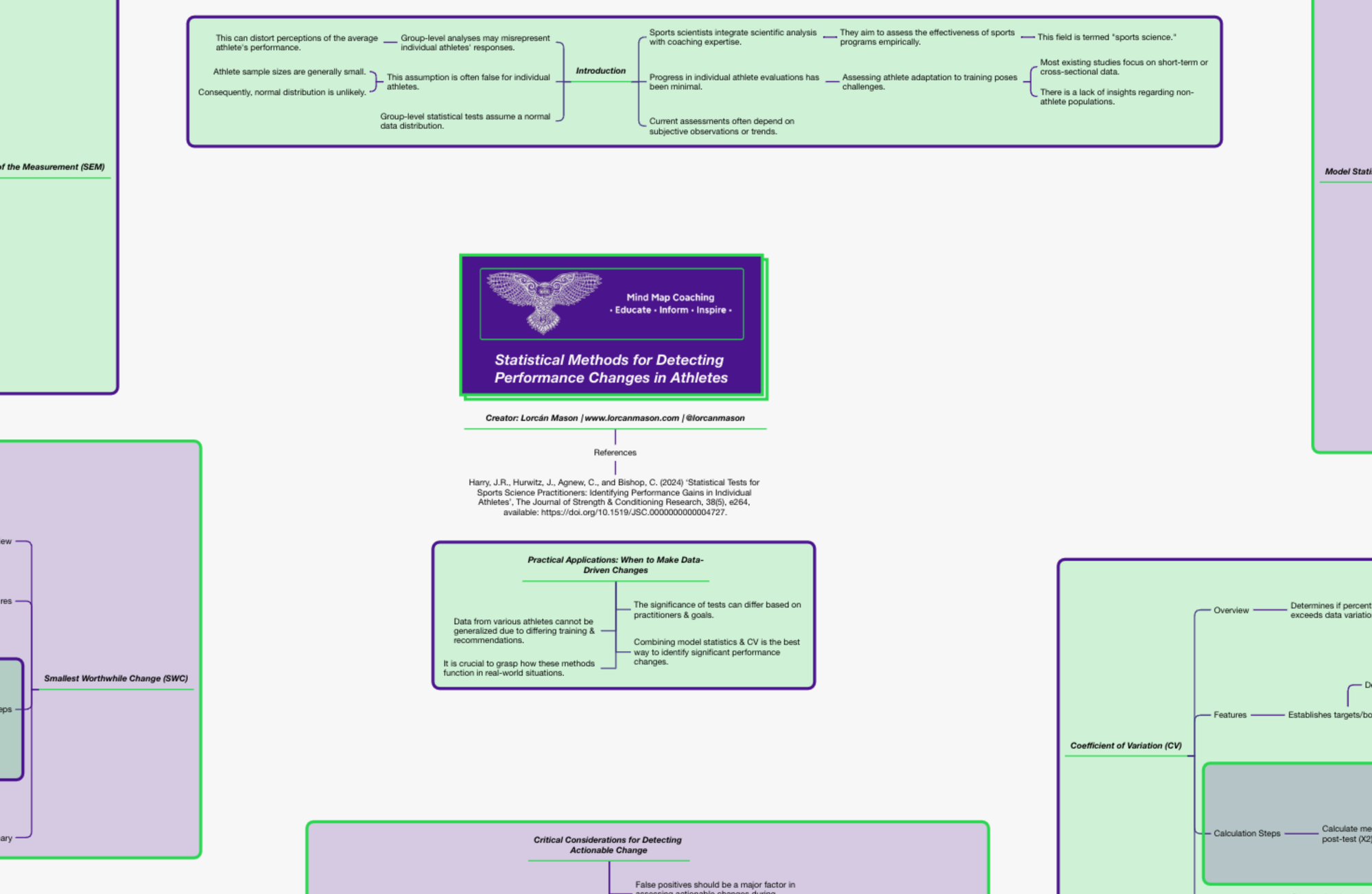Statistical Methods for Detecting Performance Changes in Athletes
Single-subject statistical methods are crucial for evaluating performance changes in individual athletes, especially when working with smaller groups or limited data. Practitioners should move away from relying solely on group-level statistics or subjective assessments.

Statistical Tests for Sports Science Practitioners
This article highlights the importance of single-subject statistical analysis for sports science practitioners to determine training-related adaptations in individual athletes. While group-based statistical analyses have been conventionally used, they are not always suitable for evaluating individual athlete performance, particularly in settings with smaller athlete squads or limited resources.
Background and Challenges
- There is a growing trend in sports organisations to form teams of sports scientists and practitioners to evaluate the effectiveness of training interventions.
- The main goal is to use objective data to provide athletes with recommendations for improvement.
- However, unlike the abundance of resources for group evaluations, the field lacks practices centred on evaluating individual athlete performance.
- This lack of individual athlete evaluations poses challenges for practitioners in determining whether athletes are adapting to training or if changes in performance are due to the training.
- The available literature primarily focuses on short-term studies conducted on non-athlete populations, further limiting the applicability of findings to real-world athlete settings.
- The limited potential to make actionable decisions is primarily attributed to:
- A shortage of qualified sports scientists and experienced practitioners in the United States.
- A lack of training in research methodology, data management, analysis, and statistics in individuals assigned to these roles.
- The predominant exposure of sports scientists to statistical tests aimed at generalizing results from a sample to a larger population, which is not always applicable to individual athlete assessment.
Importance of Single-Subject Approaches
- Replicated single-subject approaches offer a valuable solution for evaluating individual athletes, particularly for smaller squads.
- These approaches focus on detecting changes within an individual's performance rather than relying on group averages.
- However, many practitioners still rely on subjective visual inspection or trend analyses, which can be unreliable.
- The article advocates for using robust statistical methods to strengthen the foundation of individual athlete assessments and provide empirical evidence for performance adaptations.
- The authors aim to guide practitioners in selecting and applying appropriate single-subject methods to detect performance adaptations in individual athletes.
- They provide explanations for specific methods and step-by-step instructions on how to conduct each test.
Limitations of Group-Level Statistical Testing
- Traditional statistical tests like t-tests and ANOVAs are designed for group-level analysis and rely on the assumption of a normal distribution.
- When applied to individual athletes where data points are typically limited, these tests may not be appropriate.
- Group-level approaches with small samples can lead to:
- Misinterpretation of results.
- A misrepresentation of the individual's response to training.
- Replicated single-subject approaches are better suited for smaller sample settings and provide more accurate assessments of individual athlete adaptations.

